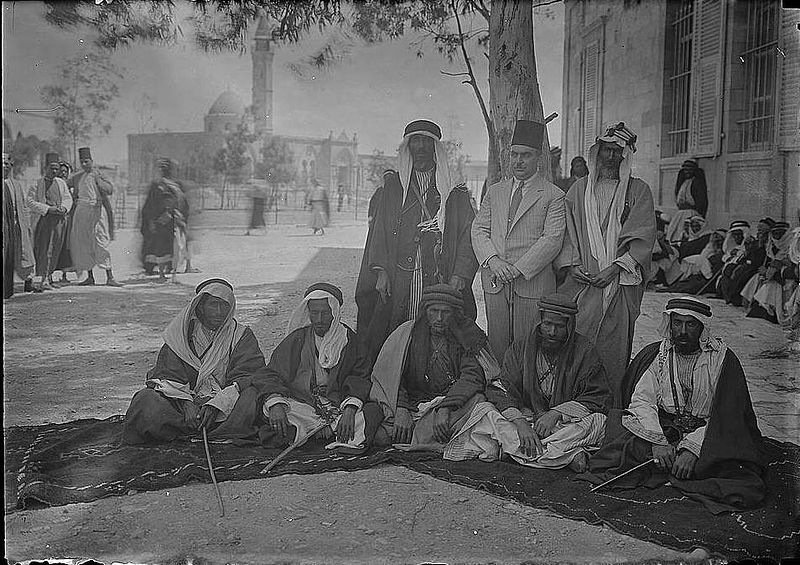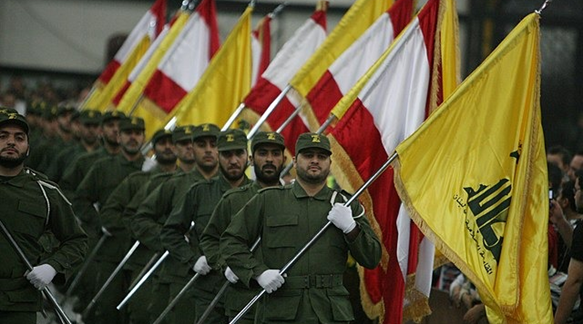Rabbis for human rights think they've found Zionist proof of Bedouin land holdings. The problem? It proves the exact opposite.
Rabbis for Human Rights and radical scholars claim to have found proof of Bedouin land ownership in the Negev from a 1920 Zionist document • There's just one problem – the document proves precisely the opposite • The Bedouin only "owned" land in the sense that they raided and took it by force • Neither the Ottomans nor the British ever recognized this method of acquisition as legal title and neither should Israel • A case study in the abuse of history for political ends

In the fall of 2013 the organization Rabbis for Human Rights boasted that it found new evidence about Bedouin land rights in the Negev. On November 24th, they published their report “primary Zionist document reveals Bedouin ownership.” They were so sure of themselves they even posted the 1920 report on the net. Pro-Bedouin researchers Ahmed Amara, Oren Yiftachel and Sandy Kedar then published an op-ed in Haaretz, mentioning this document and claiming that the Negev “never belonged to the state” and “Bedouin claims stand on firm historical and legal problems.” Unfortunately the newly revealed document doesn’t show anything of the sort.
Let’s take a tour through the new claims. Luckily for all concerned, the reader can go check the documents themselves. In fact, this open-source presentation of material and evidence for all to see is for the best. Scholars and organization like RHR have for years hidden behind claims of having “specialized knowledge” of these issues and framing them with fancy terms about “justice” and “settler-colonialism.” But the emperor has not clothes – the documents prove the diametric opposite of what the activists claim they show.

The 1920 PLDC document
RHR claims that a document created in 1920 by the Palestine Land Development Company, an organization founded in 1908 to purchase land for Jewish settlement and agriculture in Ottoman Palestine, proves there were “2.6 million dunams under Bedouin ownership.” They argue that the “results of the survey are clear-large tracts of the Negev are settled, cultivated and under Bedouin ownership.”
The actual document is not as “meticulous” and clear as the authors pretend. It has no clear publication date or a description of the author’s expertise. Its pages are not in order and it appears part of it is missing. Inexplicably some part is in Hebrew and others in English. What it does reveal is a very interesting survey of the Bedouin tribes and clans of the Negev. Each tribe is noted along with several facts about it, such as “cultivated area”, “water supply”, “ownership” and “relations with the government.” In this sense it is a very interesting survey, comprehensive in the sense that the authors detail the cultivation of each sub-tribe. It is assumed the document was prepared to give potential Jewish land purchasers a gazetteer of the Negev, which at the time consisted only of Bedouin tribes and the lone town and administrative center of Beersheba.
RHR claims that the report reveals that the “Azazma tribe owns 770,000 dunams of land.” In fact the report says “the tribe of Azazmeh does not own any official papers confirming that the area belongs to them” and the author notes “nearly the whole area on their borders has no legal owner.” The author claims that “they only possess Khoudjadj for a small part of the area.” The report is clear: this tribe has no legal right to land and it has not registered claims to it with the Turkish authorities. The report notes that “only a very small part of the area is cultivated.” The author calls them the “least civilized tribe in southern Palestine” and says they lead a “life of nomads”, so that they move as far as the Jezreel valley (“Esderaelon plain”). They are “warlike.”
What is fascinating with the report about the Azazmeh, as with the other tribes in the survey, is that the author notes that “the Effendis possess only very few lands among the Azazmeh. The Effendis named hereunder succeeded during the Turkish regime to own large areas in this section.” The report notes that a Christian from Jerusalem named Tufik Batatah “owns a large area” of land among the Azazmeh.
This is the information RHR, or its academic friends like Yiftachel, don’t reveal to us when discussing this document. That's because the real story of the 1920 PLDC document is that it reveals the Bedouin owned nothing and had rights to no land under the Turkish regime; but it does reveal that wealthy Arab effendis, urban elites, had legally acquired land where the Bedouin were living. These effendis registered their land with government authorities and actually owned it.
RHR claims that “the Jabarat tribe own 66,000 dunams” according to the document. The survey notes that this tribe “lives in mud houses.” The page and date-section relating to ownership for the tribe is missing, but the document does show that five effendis from Herbon, Jaffa and Gaza owned land in the area that Jabarat were.

RHR claims that the document shows the Tayaha owning “1,120,000 dunams.” The document does appear to say that “the marked area is owned by the great tribe of Tayaha (numbering 8,000 souls).” The author relates the history of the tribe, claiming that it once “ruled southern Palestine for several centuries…and the Fellaheen [Arab peasants in villages] of the south paid taxes” to the tribe. The author even claims that “Gaza belonged to the Tayaha.” And then he writes something interesting, “the greatest part of their area they conquered by the sword in the course of some centuries.” They dispossessed the Jabarat, and the author notes that the sub-tribes have fought battles with the Arab villages in the south Hebron area, such as Dahariyeh. But then we come to important information about “ownership”, the survey notes “the Tayaha have no Government documents showing this area belongs to them. The only document they do possess is Khidjeh.” The survey explains that “khidjeh” is a type of document “signed by the old sheikhs neighbor tribes and passes in inheritance from father to son.”
This tells us everything we need to know. The Tayaha don’t actually own any land. They occupy land and we know that due to their former power as warlords, they were able to push other Arabs and tribes off land “with the sword.” For instance the author relates that at Tel Arad, the tribe tried to push the villagers of Yatta off land there that they cultivated. The outlandish claim that they “own Gaza” shows the weakness in the RHR position. If we accept that the word “possess” or “own” means actual ownership, then the theory would be that Gaza should be “returned” to the Bedouin. But no one is returning Gaza, for the obvious reason that the actual legal right to land is not defined by murdering people “with the sword” to acquire it. The Ottomans had a clear land code since the 1850s, and they had a land office in Gaza and Beersheba since 1900. The real owners registered their land, they didn’t bring the sword.
Bedouin claims based on a Mafia conception of "rights"
The fact that the Tayaha has agreements with other tribes is typical of cultures, like the Mafia, that seek to undermine the state. Thus Billy the Kid in the American Lincoln County War, had various agreements with other gang members, or the American Mafia used to divide up cities into areas of control. However, that doesn’t make these agreements and documents legal and it doesn’t mean in 2014 that governments should acquiesce to accept such informal agreements among warlords. The Tayaha were a powerful tribe, and they didn’t register their land in their period because they thought the Turkish government and the British mandate was weak. The tribe was very mobile; the authors note that “at the time of the harvest a great part of the tribe advances north and reaches sometimes the Esderaelon [Jezreel] valley.” If the tribe moved over such a huge amount of land, perhaps the real area that it had “land claims” to stretch up to the Nazareth; but these claims are based on no legal rights.
The real rights, ironically, to the areas in the Negev where the Tayaha were, belonged to the effendis in 1920. The authors note “throughout the area of the tribe the Effendis of Gaza, Beersheba and Hebron own large estates. The most fertile land fell into the hands of the effendis.” Far from the RHR claim that the tribe was cultivating large amounts of land and this gives hem some hereditary rights, the reality is that the real cultivation was undertaken by wealthy Arabs from the cities. The survey lists forty effendis who were the real cultivators and apparently legal owners of this land.
To receive updates on new articles in English, join Mida on Facebook or Twitter or join our mailing list.





very important information